Technical bike training for the triathlon

- 1. Understanding the Importance of Technical Bike Training for the Triathlon
- - Key Skills Required for an Efficient Cyclist in Triathlon
- - How Technical Bike Training Influences Overall Triathlon Performance
- 2. Essential Aspects of Technical Bike Training for Triathlons
- - Building Strength and Endurance through Specific Cycled Training
- - Mastering the Art of Climbs, Descents, and Flat Terrains
- - Importance of Transitioning Techniques in Triathlon Cycling
- 3. Optimizing Cycling Techniques for Triathlons
- - Efficient Pedaling Techniques for Prolonged Cycling
- - Aerodynamics and Riding Positions for Speed and Energy Conservation
- - Gear Shifting Techniques to Maximize Cycling Efficiency
- 4. Incorporating Outdoor and Indoor Cycle Training in Your Regimen
- - The Role of Outdoor Training in Simulating Race Conditions
- - Utilizing Indoor Training for Controlled and Focused Exercise
- 5. Balancing Bike Training with Swimming and Running Regimens
1. Understanding the Importance of Technical Bike Training for the Triathlon
As we navigate the multifaceted world of triathlons, it becomes evident just how instrumental technical bike training is to the mix. Not only does it hone our skills and enhance our agility on the bike, but it also significantly sways our overall performance in the triathlon race. To evolve into an efficient cyclist in triathlon, we need to remember the cycling component isn't a standalone aspect; it's a vital piece within a far more substantial fitness puzzle. Fine-tuning our cycling capabilities, mastering the transitions, and discovering the right balance for all the three triathlon disciplines can indeed be a game-changer that elevates our athleticism to its pinnacle.
- Key Skills Required for an Efficient Cyclist in Triathlon
Every triumphant triathlete knows that cycling isn't just about brute strength - it's a fusion of strength, endurance, technique, and incredible diligence. Understanding and mastering the key skills required for an efficient cyclist in triathlon is paramount to overall performance. One key aspect is the development of technical aptitude. This is not just about how to ride a bike, but knowing when to switch gears, understanding the ideal cadence, keeping your balance through challenging terrains, and maintaining an efficient riding posture for optimum aerodynamics. Another crucial skill is the ability to manage your stamina. Triathlons are grueling, and the cycling section forms a significant part of the race. Managing your energy reserves effectively could well make the difference between standing on the podium or just making up the numbers. Finally, we can't rule out the power of mental strength. Triathlons can take hours to complete, and maintaining your focus throughout the entire cycling phase is a key skill that one needs to master. It's not just a physical challenge, it's a mental battle that calls for an unyielding determination to overcome. Remember, it's a race against yourself just as much as it's a race against others.
- How Technical Bike Training Influences Overall Triathlon Performance
Technical bike training plays a crucible role in enhancing overall triathlon performance. By focusing on a meticulous process of skill fine-tuning, and physical conditioning, the cyclist can significantly improve their race outcomes. Endurance, speed, strength, and technical skills are typically the focus in such training, as triathlons demand a competent blend of these attributes. Remember, cycling in a triathlon isn't merely about pedaling tirelessly. It's about strategically rationing your energy while maintaining an optimal pace. Through technical training, you learn effective pedaling techniques that boost your efficiency and conserve your energy. Simultaneously, you develop your strength, primarily in the lower body, ensuring you're equipped with the power needed for high-speed performance. Importantly, the training also encompasses lessons on handling diverse terrains. Triathlon courses won't always present flat, straightforward paths. You're potentially looking at relentless uphill climbs and precarious descents. Technical training prepares you for such eventualities, helping you tackle them with confidence and proficiency. From gear shifting to transition techniques, every finer detail factors into your triathlon performance, ultimately shaping your success in the race. So, in a nutshell, technical bike training infuses your triathlon performance with the resilience, versatility, and efficiency you need to effectively compete and conquer. Remember, each pedal stroke counts in carving your victory!
2. Essential Aspects of Technical Bike Training for Triathlons
The technical aspects of bike training for triathlons are paramount for any triathlete striving for excellence. Effective cycling begins with building formidable strength and resilience, looping in distinctive cycling workouts that push your limits, enhance your endurance, and refine your overall biking prowess. Developing proficiency in varied terrains, including climbs, descents, and flats, stands integral to a well-rounded, multi-dimensional cyclist. Mastering these skillful maneuvers requires undivided attention, consistent practice and tactical implementation during on-ground trial sessions or training. Furthermore, it's critical to understand the art of transitioning techniques in triathlon cycling, as seamless shifts can significantly affect the course's outcomes and your overall performance. In essence, technical bike training is not merely about physical readiness but involves a meticulous blend of strategy, agility, and adaptability.
- Building Strength and Endurance through Specific Cycled Training
Building strength and endurance plays an imperative role in shaping the overall cycling performance for a triathlon. This goes beyond just repeated cycling; it means embracing specific cycled training techniques designed to enhance both your stamina and strength. How exactly can you cultivate this strength? Focus on resistance training, as this helps to boost your muscle's ability to withstand lengthy periods of strain, which is a significant aspect of triathlon cycling. Incorporate exercises that rigorously work out your legs for increased power output per cycle stroke. Besides, focus on cycling uphill, as it's an excellent strategy for building both strength and endurance. Moreover, endurance is about boosting your riding longevity. Design your training regimen to include long, steady rides that increase your heart's efficiency and jump-start your metabolic system. You'll be amazed at how this factors into your ability to cycle longer distances without succumbing to fatigue. This type of cycled training prepares your body and mind more adequately for the triathlon, resulting in better performance. Remember not to overdo it; allow adequate recovery time to ward off potential injuries. Stay consistent in your training and you'll be amazed at how much a powerhouse cyclist for triathlon you can become.
- Mastering the Art of Climbs, Descents, and Flat Terrains
Mastering the intricate art of climbs, descents, and flat terrains is an essential skill for bikers aiming to excel in triathlon. It is vital to comprehend the impact of gradients on your performance and energy expenditure. Uphill riding or climbing requires powerful and sustained effort, pushing your muscles and aerobic threshold to its limits. Here, the key is to maintain a steady rhythm, focusing on your form, and efficiently using your gears. Meanwhile, descents demand a unique combination of courage, expertise, and control. A well-executed descent not only provides a much-required break but can save crucial seconds in a race. It's imperative for riders to learn the technique to lean into the bicycle, rather than merely steer it. And then, comes the flat terrains, where consistency and maintaining an optimal speed can help conserve energy and build momentum. Remember, a triathlon is not merely about brute power; it's a test of technique, endurance, and strategic planning. Remember, every incline you conquer, every descent you swiftly glide through, and each flat terrain you cover efficiently, they all add up, increasing your overall triathlon performance significantly.
- Importance of Transitioning Techniques in Triathlon Cycling
Understanding the importance of transitioning techniques in triathlon cycling is crucial in maximizing your performance throughout the race. A smooth transition from swimming to cycling, and then to running, can notably reduce your overall time and optimize energy utilization. So, how exactly does it influence your triathlon journey? Imagine this: You've just finished an exhausting swimming segment. Drenched and breathless, you need to immediately hop on your bike and start pedaling. Sounds daunting? That's because it is! Without appropriate transitioning techniques, you could lose valuable seconds, or even minutes, fumbling with your bike gear or trying to find your rhythm. Transition training aims to make this process as seamless as possible. An efficient triathlon cyclist, therefore, must pay attention to activities like swift mounting and dismounting, quick changing of shoes, and effective gear shifting. You see, in a race where every second counts, these nuances can be the difference between winning and just finishing. So, whether you're a beginner or a seasoned triathlete, never overlook the significance of transition practice in your training regimen. Remember, in triathlons, you are not just up against other athletes, but time itself. Don't let poor transitions slow you down. Train smart, race hard, and watch your cycling transitions drastically improve!
3. Optimizing Cycling Techniques for Triathlons
In the crucible of Triathlons, optimizing your cycling techniques can provide the crucial edge that tips the scales in your favor. An efficient pedaling technique retains your stamina while maximizing distance covered. Imagine you're a well-oiled machine, each kick smoothly transitioning into the next, reducing stress on your legs. And let's not forget the significance of aerodynamics, much like a bird in flight, your riding position plays a determining factor in conserving energy and maintaining high speed. The more streamlined you are, the easier it is to cut through headwinds. And finally, gear shifting isn't just about handling inclines and descents, it's a delicate dance of control to ensure optimal power output. Did you know every subtle tweak in these techniques could mean the difference between first or second place?
- Efficient Pedaling Techniques for Prolonged Cycling
Mastering efficient pedaling techniques can revolutionize your performance in prolonged cycling segments of a triathlon. It's no secret that proper pedaling mechanics can lead to significant improvements in speed, endurance, and overall energy efficiency. But how exactly can a rider implement such efficiency into a frenzied triathlon setting? One key aspect to consider is the circular pedaling stroke. Instead of the traditional 'push down and pull up' technique, adapting a circular motion allows cyclists to utilize their power throughout the entire pedal stroke. This means less wasted energy and more distance covered in a shorter span of time. Moreover, pay attention to your cadence. Maintaining a high and steady cadence not only reduces muscle fatigue by spreading the load across a larger set of muscles but also helps in conserving energy for the upcoming running segment of the triathlon. Always remember, cycling in a triathlon is not just about brute strength – it's about efficiency and smart energy management. Therefore, take some time to refine your pedaling techniques. It might seem daunting at first, but the rewards in terms of saved time and energy will be worth it. To conclude, efficient pedaling techniques are crucial for any severe triathlon athlete. Turn your training attention toward these aspects to significantly enhance your triathlon cycling segment. Practice makes perfect, and triumph could just be a pedal stroke away!
- Aerodynamics and Riding Positions for Speed and Energy Conservation
In the exerting realm of triathlon, understanding the nuances of aerodynamics and adapting appropriate riding positions can greatly conserve your energy and boost speed. While the essence of cycling might seem simplistic, the slightest alterations in your body posture can influence your aerodynamic drag, thus, impacting your performance to a substantial extent. Have you ever noticed how seamlessly a falcon cuts through the air? This is achieved through a streamlined body posture, minimizing air resistance. It's a principle well-worth emulating in triathlon cycling - riders can cut through headwinds more efficiently by tucking their elbows in, lowering the torso, and keeping the head down, all packaged in a comfortable and maintainable position. This is often referred to as the aero position which contributes to conserving essential energy for the subsequent running stage. On the flip side, adopting correct gear-shifting techniques refines your riding experience, allowing for smoother transitions and better terrain management. Noticeable shifts in gradient call for prompt gear adjustments to maintain a steady pedaling cadence and thus, conserve energy. Effective gear shifting, mastered only through practice, can keep leg muscles from being overstrained, consequently optimizing your bike leg in a triathlon. The triathlon isn't just about strength or speed, it's essentially a tactical balance of endurance, technical skills, and strategic energy usage. With the correct training and techniques, you can become one with your bike and the environs, just like the wind becoming one with the falcon.
- Gear Shifting Techniques to Maximize Cycling Efficiency
Properly educating yourself on gear shifting techniques can significantly maximize your cycling efficiency, especially in a demanding sport like a triathlon. When we say 'gear shifting,' it involves the intricate decision-making of when to shift up or down, based on your cycling conditions. When done correctly, it aids in maintaining a consistent and efficient pedal stroke, putting less strain on your muscles, and preserving your energy for the swimming and running segments afterwards. But the key is to understand your bike's unique rhythm. How so? Well, every bike responds differently to shifts; understanding your bike's response can be your edge in a race. Familiarize yourself with the subtle changes in your bike's resistance and speed with each shift. Keep it smooth; abrupt shifts can often lead to a loss of momentum –your worst enemy in a triathlon. Also, gear shifting is crucial while navigating hills, quick descents, or flat terrains. Aim to maintain a consistent cycling cadence. The goal here is adaptability – being able to shift your gears effectively as per race conditions can save you those precious seconds in a triathlon! Remember, it's your bike, and learning its language might be the key to your success in the next race.
4. Incorporating Outdoor and Indoor Cycle Training in Your Regimen
To ensure a well-rounded training routine for your triathlon, integrating both outdoor and indoor cycling is paramount. Outdoor cycling exposes you to real race conditions, proffering you invaluable practice with a live setting's unpredictability and challenges. It sharpens your ability to handle fluctuating weather patterns, unpredictable terrains, and varying cycling pace, vital for race-day success. On the other hand, indoor training offers a controlled environment where you can nail down specific areas without distractions. With elements like wind resistance and terrain out of play, you can focus on fine-tuning pedaling techniques, improving your endurance, or even recovering from an injury. It's the perfect complement to your outdoor sessions, forming a two-pronged training approach tailored for triathlon excellence.
- The Role of Outdoor Training in Simulating Race Conditions
The role of outdoor training is absolutely crucial in preparing for a triathlon, particularly in accurately simulating race conditions. It serves as the realistic platform where you can gauge your endurance and ability to tackle various terrains and weather conditions - the unpredictable elements that indoor training can't quite replicate. With outdoor cycling, it's a different route each time - each presenting its own unique challenges. Whether it's a steep incline, a sharp turn, or a sudden change in the weather, there's always something to adapt to. This varied experience challenges not just your physical ability, but your mental resilience too, helping you grasp the act of strategic decision-making during a race, an indispensable skill in a triathlon. But, remember, outdoor training isn't just about racing against the clock. It's also about learning to appreciate those long rides - the sensation of the wind against your face, the constant changing scenery, the random encounter with wildlife. These are experiences that enrich your overall triathlon journey. So, what's keeping you waiting? Put on your helmet, hop on your bike, and step outside. Because as they say, there's no better teacher than experience itself, especially when it comes to preparing for a tough event like a triathlon.
- Utilizing Indoor Training for Controlled and Focused Exercise
In mastering the art of triathlon success, the utilization of indoor training plays an imperative role. Indoor cycling sessions provide a controlled environment where you can zone in on specific training targets without the unpredictability of outdoor elements. Picture this, now you're in a space that's optimized for your endurance development, allowing for consistent, repeatable sessions. A significant factor that makes indoor bike training indispensable is its capacity for focused exercise. When we talk about focused exercise, we mean the ability to pinpoint certain aspects of your cycling efficiency and polish them meticulously. Perhaps you're trying to push your power output, increase cadence, or even work on riding form, indoor training aids in refining these elements. Moreover, indoor training can simulate varying race conditions. With technology now offering virtual terrains and resistance shifts, you can prepare your body and mind for different scenarios you may face in an actual triathlon. It's like bringing the race to you, a virtually replicated environment where you strategize and study your performance. So, whether you're a rookie or a seasoned triathlete, integrating indoor training into your regimen couldn't be more paramount. It's the crux that might just redefine your triathlon journey, leading you to greater performance heights. After all, triathlon success takes more than just powerful legs – it takes a combination of strategy, focus, and consistent development optimized by indoor training.
5. Balancing Bike Training with Swimming and Running Regimens
Finding the sweet spot between bike training and juggling swimming and running workouts is a make-or-break element for triathletes. It's about designing a training regimen that sharpens your prowess in all three disciplines, ensuring that you don't compromise speed, endurance or your body’s durability. Pairing up intense bike rides with lighter swimming or running sessions can work wonders, provided you listen to your body’s cues. Remember, the ultimate goal here is to enhance overall triathlon performance, not just in isolation. Planning your training schedule strategically, while honoring your body's need for recovery, can lead to prolonged athletic longevity and triumphant race finishes. Easier said than done, right? Don't sweat it; let's navigate this triathlon training riddle together.
- Structuring Your Training Schedule for Holistic Fitness Implementation
When it comes to structuring your training schedule for holistic fitness implementation, it's crucial to remember that building a formidable triathlon performance is a marathon, not a sprint—it's about consistent growth over time. Fundamentally, the best approach is to incorporate cycling, running, and swimming activities to your routine. This is not just about juggling the disciplines; it's about synchronization and harmony. Working on each discipline separately might make you a good cyclist, runner, or swimmer, but, remember, the goal here is to be an exceptional triathlete. Hence, the holistic approach is not only practical, but also vital for your success. Try to cycle at least two to three times a week, focusing on different aspects of the sport—endurance, speed, and technicality. However, don't forget about the other disciplines. Include quality, brisk swimming and running sessions in between your cycling days to make sure you are developing your triathlon skills equally. Regulate the intensity of your training across the week and don't be afraid to include rest days. These are necessary for recovery and for avoiding burnout. Always listen to your body, keep a check on your energy levels, and adjust your training regimen accordingly. Scheduling and consistency are the ingredients to a successful training plan. Strive to find a balance that keeps you challenged, engaged, and, most importantly, improving. Remember, the goal is to become a well-rounded triathlete, and this takes time and disciplined training.
- Coordinating Multiple Disciplines: Tips for Success in Triathlon Training.
Coordinating your training regimen across multiple disciplines is a significant challenge, but the key to success in triathlon training. It's all about balance. You need to give equal importance to all three aspects - swimming, cycling, and running. One cannot supersede the other. Simply put, you can't be an extraordinary cyclist but lag in swimming or running. The key to mastering this lies in creating a structured training schedule. Priority setting is a must. If you're a weaker cyclist, prioritize cycling but don't ignore swimming and running. The goal is to improve where you lack while maintaining your forte. A successful triathlete is essentially a jack of all trades. Interval training, a clever mishmash of the three disciplines, can also be quite effective. It's not just about endurance but also speed. Short bursts of high-intensity workouts can help improve your speed in all three disciplines. Finally, remember to rest. Yes, you heard it right. Even the most elite athletes require rest days to let their bodies recover and heal. Overtraining can lead to injuries and burnout. In the end, it's all about the ’hard smart work’ mantra. Train hard, but train smart. Triathlon training is no easy feat, but with apt coordination and discipline, the finish line isn't too far ahead. Keep pedaling, keep running, keep swimming, and most importantly, keep balancing. You've got this under control.
In conclusion, integrating technical bike training into your triathlon preparation is paramount. From understanding its significant role to mastering proficient cycling techniques, every aspect enhances your triathlon performance. Incorporating both outdoor and indoor training gives variety, while balancing bike training with swimming and running ensures overall fitness. Thus, grasp the art of technical biking to excel in your next triathlon.










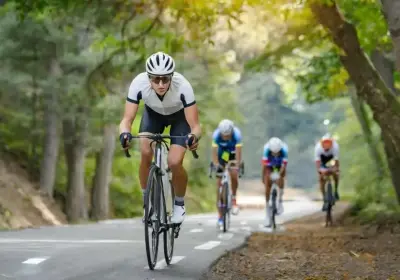



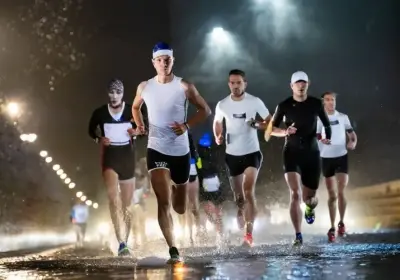


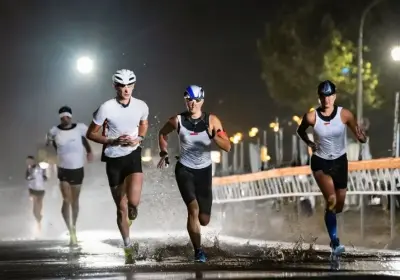







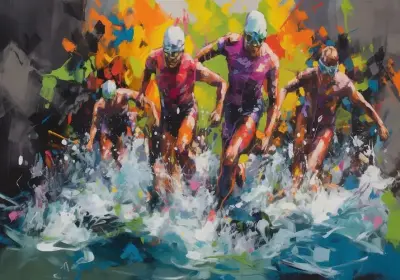

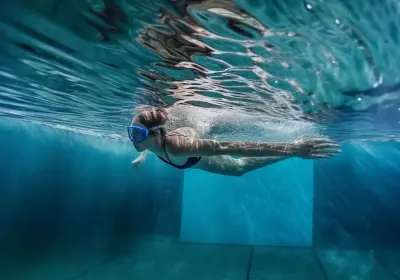
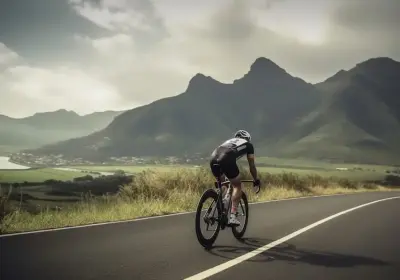
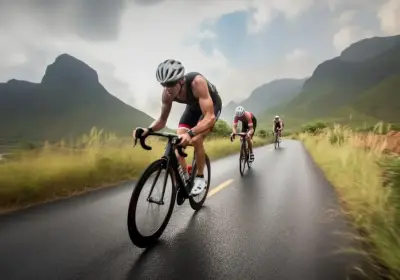








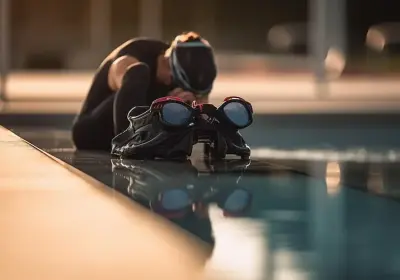
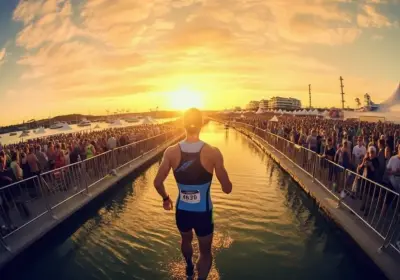










Leave a comment